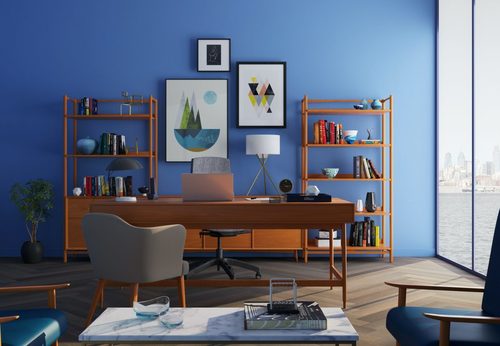Interior decorating is largely down to personal taste, budget, and space. However, a few decorating ‘rules’ are good to keep in mind. These are nine you need to know:
1. Do the measurements
It may seem like a no-brainer, but measuring your home before purchasing new furniture is a crucial first step to a successful design. Finding out later that your beautiful new couch is too big for your lounge is an expensive mistake to make. A good rule of thumb is to measure the desired item and mark the outline on the floor with masking tape. You’ll be able to see exactly how the appliance will fit in its new place before you’ve fully committed to the purchase.
2. Use Colour Psychology
Colour is highly emotive, so it affects your thinking and behaviour. As such, it’s important to choose wisely when decorating as even your favourite colour may have far more of an impact than simply looking pretty. The Mattress Warehouse recently worked with South African interior designer and colour expert, Gareth Henderson of gih Studio, to understand which are the best and worst colours for different rooms in your home based on colour psychology.
“Colour is undoubtedly powerful,” confirms Henderson.” Not only does your colour choice reveal insights into your personality, but it also has the potential to affect the emotional dynamics in a room or your home.”
Red, for instance, is bold and attention-seeking. It’s also impactful and energising – definitely a good choice for a dining room where you want to stimulate conversation and appetite. On the other hand, blue is a naturally cooling colour with an excellent calming effect on the body and mind. Choose relaxing blue for a bedroom or living room.
3. Maximise Lighting
Having just one light source in a room can quickly make the space feel flat, cramped, and depressing. Rather layer the lighting by including pendant lights, chandeliers, and trendy wall sconces. This helps to soften the lighting, create calmness, and enhance the ambience.
4. Extend Your Curtains
One surprising interior decorating rule is that your curtains should always meet the floor. Curtains that are too short make the room look unfinished.
5. Invest In a Hero Rug
Rugs can be pricey, and usually the larger you go, the more expensive they get. As such, you may be tempted to get a rug that’s on the smaller side — but don’t. A rug that’s too small can throw off an entire room so if you can’t afford a decent size, rather opt out of a rug completely.
6. Go For Timelessness
When redoing countertops, cabinets, and built-in furniture, it’s best to go for timeless styles and colours. It will be more difficult to resell a home with bright yellow kitchen cupboards than one with white cupboards and neutral walls or tiles. Rather play it safe with items that aren’t quick and easy to replace and incorporate bold trends through accessories and small pieces of furniture.
7. Mix and Match
Buying all your furniture from the same store can make your house look more like a showroom than a home. The convenience of buying everything from the same place is tempting, but it will make your house look impersonal. Rather mix your pieces and buy different items that work together. It will give your house more of a story and plenty of interest.
8. Leave Enough Space
Keep your furniture out of narrow spaces, especially if it’s a spot where people are meant to gather or walk. If you have a hallway or passage, make sure it’s wide enough before you place chairs, benches, or tables in it. Having enough space to move through your home is important to the overall flow of the design. You don’t want to feel cramped and claustrophobic in it.
9. Think About Art
Be careful not to hang artwork too high, as this can make a room feel awkward. Art always looks best at eye level, so aim for this whenever possible.
ALSO SEE:
Sourced from Garden & home Compiled by Food and Decor Editor, Claire Badenhorst
Featured image: Pexels

